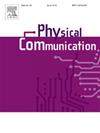Tensor decomposition estimator applied to coherent targets in EMVS-MIMO radar
IF 2
4区 计算机科学
Q3 ENGINEERING, ELECTRICAL & ELECTRONIC
引用次数: 0
Abstract
Electromagnetic vector sensor (EMVS) arrays in multiple-input multiple-output (MIMO) radar systems have gained substantial attention for their enhanced capabilities in target detection and localization over the past decade. However, conventional direction of arrival (DOA) estimation algorithms exhibit significant limitations when processing coherent targets. In response to these challenges, this paper introduces a novel algorithm leveraging tensor decomposition to enhance DOA estimation accuracy within monostatic EMVS-MIMO radar systems. Initially, we employ a specific sequence to rearrange the original array output, thereby linking the source matrix with the spatial response of the transmitting or receiving array. This rearrangement effectively addresses the rank deficiency issue in the covariance matrix. Subsequently, the restructured model undergoes parallel factor (PARAFAC) decomposition to yield high-precision estimates of the factor matrices. Ultimately, 2D-DOA estimation is accomplished by applying the normalized vector cross product (NVCP) technique to the polarization response factor matrices. In contrast to existing algorithms for coherent targets estimation, the proposed method ensures no information loss, achieves superior angle estimation accuracy, and is applicable to arbitrary sensor geometries. Numerical simulations substantiate the effectiveness and superiority of the proposed algorithm.

求助全文
约1分钟内获得全文
求助全文
来源期刊

Physical Communication
ENGINEERING, ELECTRICAL & ELECTRONICTELECO-TELECOMMUNICATIONS
CiteScore
5.00
自引率
9.10%
发文量
212
审稿时长
55 days
期刊介绍:
PHYCOM: Physical Communication is an international and archival journal providing complete coverage of all topics of interest to those involved in all aspects of physical layer communications. Theoretical research contributions presenting new techniques, concepts or analyses, applied contributions reporting on experiences and experiments, and tutorials are published.
Topics of interest include but are not limited to:
Physical layer issues of Wireless Local Area Networks, WiMAX, Wireless Mesh Networks, Sensor and Ad Hoc Networks, PCS Systems; Radio access protocols and algorithms for the physical layer; Spread Spectrum Communications; Channel Modeling; Detection and Estimation; Modulation and Coding; Multiplexing and Carrier Techniques; Broadband Wireless Communications; Wireless Personal Communications; Multi-user Detection; Signal Separation and Interference rejection: Multimedia Communications over Wireless; DSP Applications to Wireless Systems; Experimental and Prototype Results; Multiple Access Techniques; Space-time Processing; Synchronization Techniques; Error Control Techniques; Cryptography; Software Radios; Tracking; Resource Allocation and Inference Management; Multi-rate and Multi-carrier Communications; Cross layer Design and Optimization; Propagation and Channel Characterization; OFDM Systems; MIMO Systems; Ultra-Wideband Communications; Cognitive Radio System Architectures; Platforms and Hardware Implementations for the Support of Cognitive, Radio Systems; Cognitive Radio Resource Management and Dynamic Spectrum Sharing.
 求助内容:
求助内容: 应助结果提醒方式:
应助结果提醒方式:


